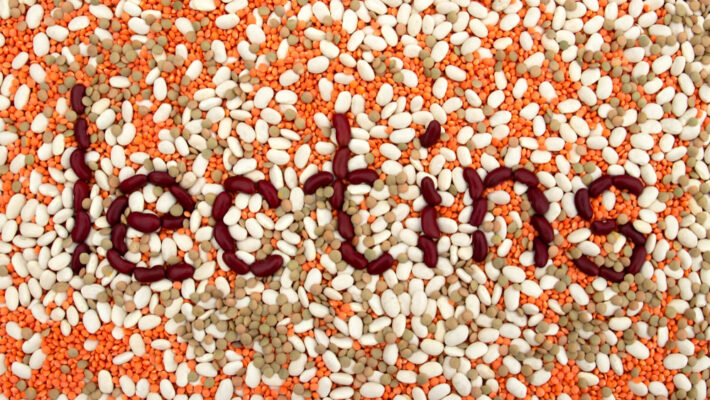
Lectin vs. Leptin: What Makes Them Different?
With just a one-letter difference, it’s easy to mix up leptin and lectin, but these two compounds are far different, possessing vastly different functions and effects within the human body. Learn more about lectin and leptin and why it’s important to understand their differences below.
What is Lectin?
Lectin is a type of protein that binds to carbohydrates. Lectins are found in all plants, but you can find the highest concentration of lectins in raw legumes, like beans, lentils, and peas, as well as whole grains. Aside from leptin, lectin is frequently confused with glycoproteins (proteins that contain sugar chains or sugar residue) and lecithins, which are fatty substances found in both plants and animals.
Lectins in general are no cause for alarm, but some lectins may pose a problem when eaten in their raw, uncooked form or in large quantities. Lectins possess features that allow plants to defend themselves in nature against pests, insects, and microorganisms, but those same defensive mechanisms may pose a problem to the human digestive system. Lectins generally remain stable in acidic environments (including your stomach) and can resist breakdown.
In their active state, lectins may pose certain negative side effects. These are most commonly reported in cases involving the consumption of raw or undercooked kidney beans, which contain a lectin known as phytohaemagglutinin. Phytohaemagglutinin can cause red blood cells to clump and cause general digestive issues, including nausea, vomiting, diarrhea, gas, and bloating.
Cell and animal studies also suggest that lectin may interfere with the absorption of certain nutrients, including iron, zinc, calcium, and phosphorous. Because lectin can bind to the lining of your digestive tract, it may further disrupt nutrient absorption and cause problems for your intestinal microflora.
Lectin Benefits
Granted, lectins are not all bad. They possess antioxidant potential to neutralize free radicals, and they can help to slow down the digestion of carbohydrates, preventing any sudden spikes in blood sugar. Most of the foods high in lectins—legumes, nuts, and whole grains—are also rich sources of fiber, protein, B vitamins, and other essential nutrients. Thankfully, it’s generally easy to reduce or inactivate lectins. Lectin is most powerful in its raw form, so cooking or soaking them in water for several hours is enough to neutralize lectins.
What is Leptin?
Unlike lectin, leptin is a hormone that is naturally produced within the body. It is secreted by adipose tissue, or your body’s fat cells, and signals your brain and hypothalamus. While it possesses a variety of functions involving the body’s immunities, fertility, and central nervous system functions, leptin is best known as the “satiety hormone” for its role in regulating your food consumption and calorie usage in the long-term.
Essentially, when your body does not need energy, leptin inhibits hunger and regulates energy balance, allowing you to maintain an optimal body weight and burn calories at a regular rate. This keeps you from starving and overeating. High levels of leptin inform your brain that you have enough fat stored for fuel, while lower levels of leptin tell your brain that you need to eat. While this applies from meal to meal, leptin is also necessary to long-term regulation of weight and energy.
Leptin Resistance
The main problem with leptin is leptin resistance. In obese individuals, leptin levels are often far too high in the blood. Despite these high leptin levels, the brain does not recognize the hormone. The consistently high levels cause the brain to become less sensitive, resulting in leptin resistance. Research currently suggests that leptin resistance may be one of the main physiological factors contributing to obesity.
Leptin and Colostrum
In one study, researchers evaluated the leptin content in bovine colostrum compared to milk and plasma. Leptin concentration remained 56 percent lower in mature milk at 10 days than colostrum, remaining steady over the course of 20 days after. Results ultimately showed that colostrum maintained the largest concentration of leptin, followed by untreated milk, while skim milk was likely to have the largest decrease in leptin amount. More research is necessary to determine if colostrum or untreated milk could serve a function for those with leptin resistance or deficiency.
In summary, lectin is a protein that binds to carbs, while leptin is a natural hormone that plays a role in feelings of satiety, calorie usage, and other physiological functions. They influence different functions in your everyday health and wellbeing.
Sources:
- https://www.hsph.harvard.edu/nutritionsource/anti-nutrients/lectins/
- https://www.precisionnutrition.com/all-about-lectins
- https://www.hormone.org/hormones-and-health/hormones/leptin
- https://www.healthline.com/nutrition/leptin-101
- https://www.ncbi.nlm.nih.gov/pubmed/16523408



